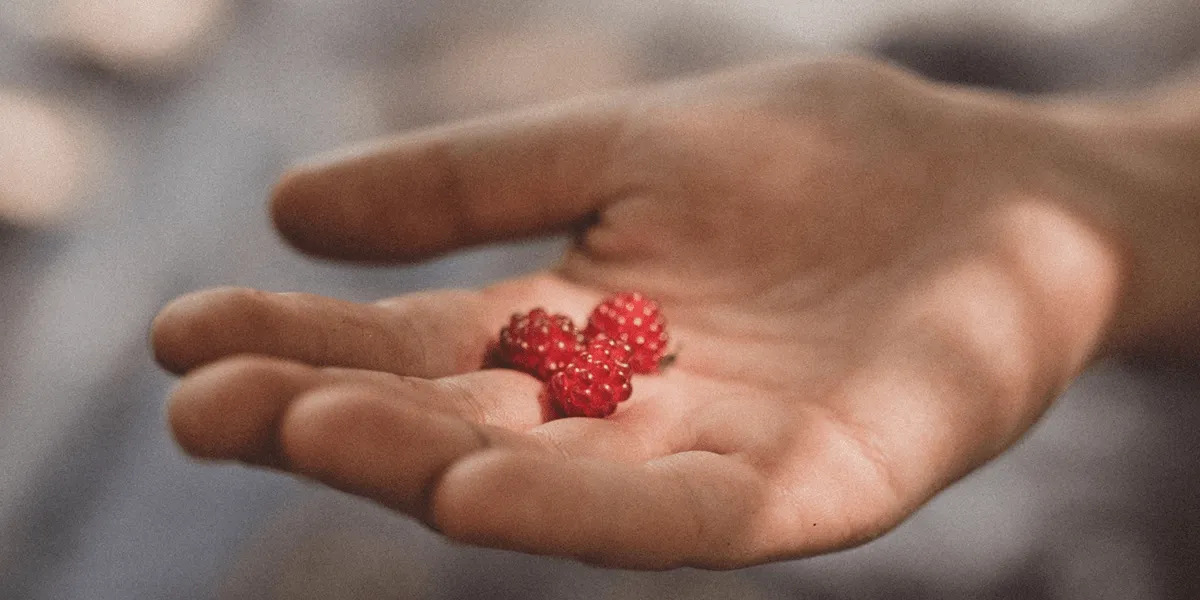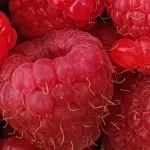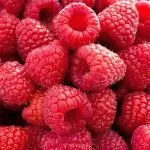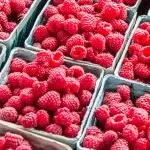Some people don’t realize this, but raspberries are not seedless. All raspberries are composed of small sections called drupelets, each of which contains a single seed. On average, a raspberry has about 100 seeds, one for each drupelet.
While some raspberry products are sold as ‘seedless’, no known varieties exist that do not contain seeds. All seedless raspberries are actually varieties with small-sized seeds. After all, a seedless raspberry would not be able to reproduce.
An example of a supposed ‘seedless’ variety is Rubus idaeus, or European raspberry. Much like its American counterparts, each juicy fruit compartment has one seed. The fact that seeds for this variety are widely available online will tell you enough. No such thing as truly seedless.
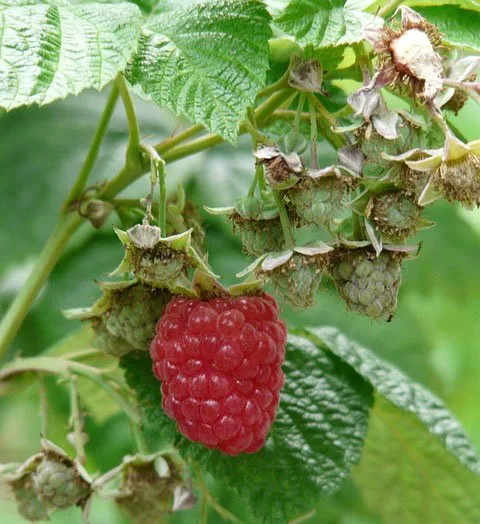
Raspberries Are Not Seedless
Some species of grapes and berries can be seedless. Their parent plants are pollinated without fertilization, which doesn’t allow the seeds inside the fruit to mature. However, no seedless caneberries exist, which include raspberries and blackberries.
While there are raspberry varieties with relatively small seeds, seedless raspberries do not exist. However, their seeds are perfectly edible and they will be barely noticeable during consumption.
Raspberries are soft fruits and the seeds are also relatively soft. Because they are so small, they’re usually swallowed whole. The seeds generally don’t impact your eating experience. In fact, they might even be healthy for you!
What Part Of The Raspberry Is The Seed?
Raspberry seeds are found in the center of the drupelets, which are the small compartments the raspberry fruit is made of. A single raspberry can contain up to 100 drupelets, and each drupelet is actually considered an individual fruit.
The little black things inside the juicy fruit part of the raspberry drupelet are the seed of the fruit. The raspberry drupelets are held together by hairy pistils, which are small fibrous hairs found across the entire fruit.
The visual aid below explains the names of the different parts of the fruit:
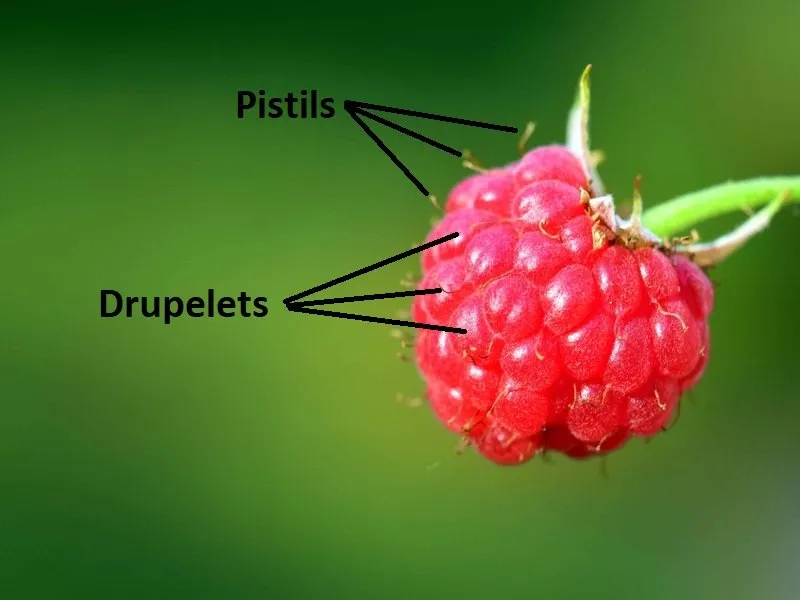
Raspberry Seeds Are Edible
That little seed inside a raspberry drupelet might not be as much of a problem as you might think. Raspberry seeds are safe to eat and might even be considered healthy. They are a good source of fiber, fatty acids (omega 3 and 6), as well as antioxidants, especially when eaten whole.
In fact, raspberries are among the greatest sources of fiber with an impressive 8 grams of fiber per cup. The seeds are a major contributor to this high fiber content, which is amazing for a healthy gut.
Please note that the seeds of fruits such as raspberries are digested relatively fast. They are considered to have a mild laxative effect, helpful in preventing constipation problems.
How To Remove Seeds From Raspberries
For the production of some specific products (such as jams or sauces), you might still want to remove the seeds from the berries. The process of raspberry seed removal can be a bit labor-intensive, but it’s definitely possible.
To remove raspberry seeds, all you need is a bowl of fresh raspberries, an empty bowl, a spoon, and a regular kitchen strainer. Follow these simple steps to manually remove the seeds from a raspberry:
- Place the strainer inside the empty bowl;
- Put a few raspberries inside of the strainer;
- Use the spoon to crush the raspberries and press them through the strainer into the empty bowl. This will essentially create a raspberry puree;
- Repeat the process until you have enough raspberry puree. The seeds will all remain inside the strainer.
The YouTube video below will give you a visual description of the simple process we just described for you. It will help you remove raspberry seeds quickly and efficiently:
Seedless Raspberry Products
All raspberries can be separated from their seeds with the process described above. This is especially useful for processing fresh berries inside a specific product you’re looking to make.
A lot of processed raspberry products inside the supermarket will no longer contain the seeds. Making these from scratch will, of course, always be the healthier and fresher choice. Some common examples of seedless raspberry products might include:
- Jam: One of the most common ways to preserve fresh or frozen fruits for longer periods of time (in a cold, dark place in your pantry for up to multiple years!) Seedless raspberry jam can be made from fresh or frozen berries. You can start doing this at home using this easy-to-use recipe.
- Sauce: A variation on the jam can be seedless raspberry sauce. This could be perfect for a cheesecake or on top of any type of dessert. If you’d like to make this yourself, feel free to use this recipe.
- Ice cream: While we’re in the world of desserts, another place you’ll often find fresh raspberry flavors without seeds is the realm of dairy-based ice creams. If you’d like to make this yourself, this easy recipe is the perfect choice for you.
- Cake or pie filling: Pies and cakes are the ultimate way to enjoy fruits. Use your baking skills to make raspberry-flavored delicacies using these seedless raspberry cake recipes from Cake Boss. You could also use the filling for other pastries, including cookies. Enjoy!
